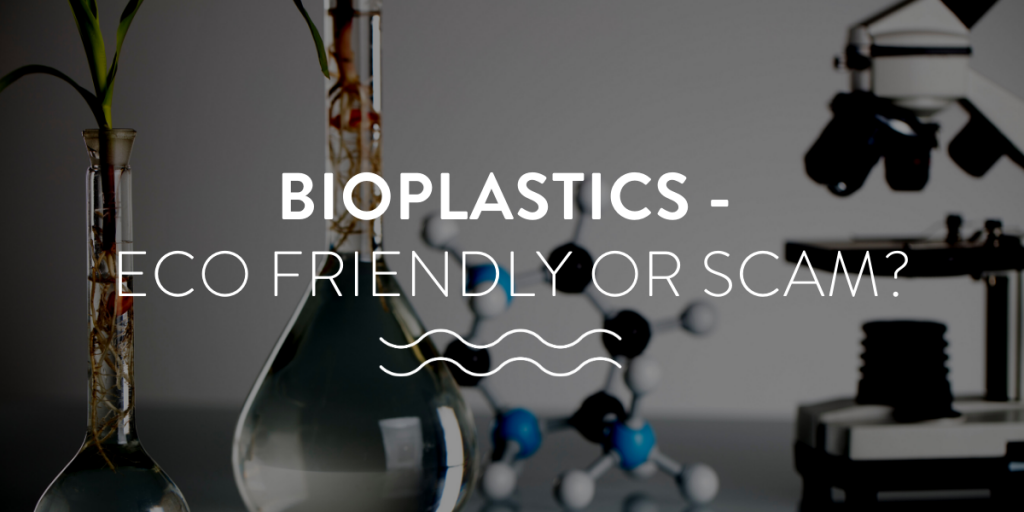It is no real surprise we’re addicted to plastic! In some industries, i.e. medical, plastics have been revolutionary and its properties are irreplaceable: light-weight, durable, sanitary. Can you imagine a world of modern medicine without plastic IV bags, nitrile gloves, pipettes, or syringes?
Disposable and single-use are not to be demonised in every situation. The throw away culture that has built up around it and its persistence in the natural environment is our real peeve with plastics!
Read : Where Does Ocean Plastic Come From?
So, are bioplastics humanity’s solution to our over reliance on landfills? Will bioplastics stop the growth of the oceans’ garbage patches? Or are they just a greenwashing scam? What’s marketed as a wonder material may not currently be better than normal plastics.
Read on to learn all about what bioplastics are, some important definitions and the issues surrounding them …
What does ‘Bioplastic’ mean?
Bioplastics are plastic materials produced from renewable biomass sources (e.g. corn starch, cellulose or recycled food waste) instead of fossil fuels.
However, despite the name not all bioplastics are 100% biomass-based and not all bioplastics are biodegradable or compostable.
The big problem is that not all bioplastics are made the same, but their purpose should be. They should possess the same beloved qualities of traditional plastics, but degrade into natural entities in a short amount of time.
The key words being time & natural here …
In an infinite amount of time, any material will begin to break down. Whether this is a banana skin decomposing into rudimentary elements or ocean bound plastic breaking down into tiny microplastics, both natural and synthetic materials will degrade into smaller components over time.
Biodegradable materials should behave like a banana or other organic materials. They should be broken down by microbial action, chewed up and turned into natural byproducts like biomass, water and carbon dioxide or methane.
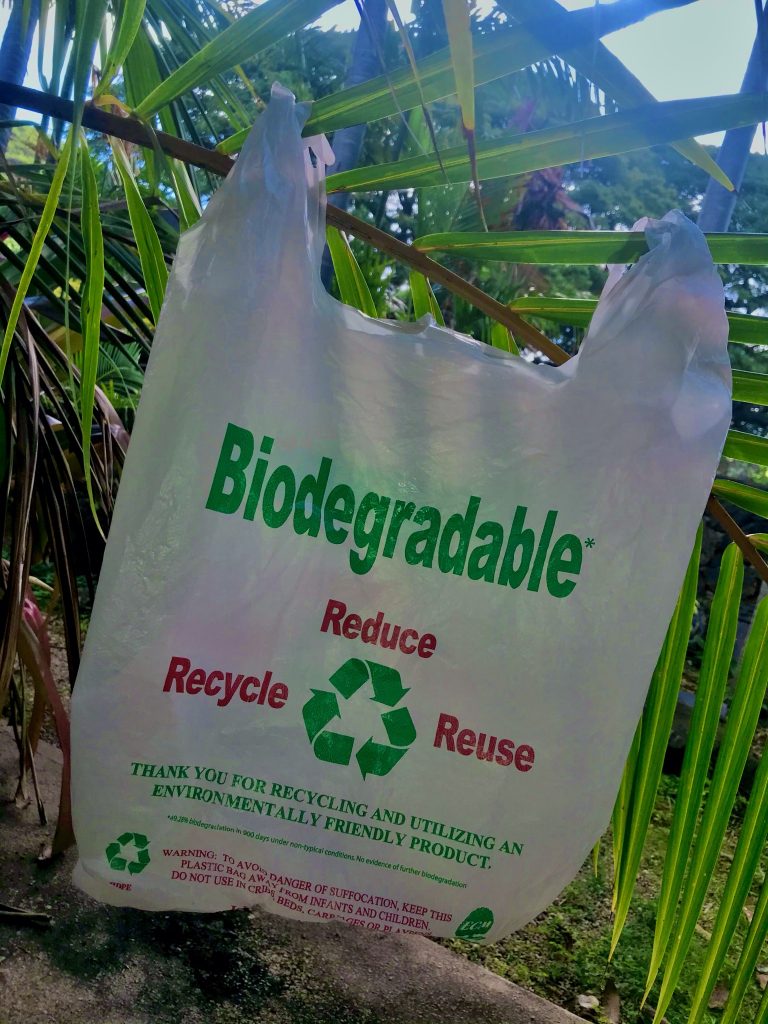
Do Bioplastics break down in the environment?
To emphasise the bioplastic problem, Imogen Napper at the University of Plymouth tested three carrier bags labelled as biodegradable, compostable, and conventional plastic. The bags were either buried in soil, placed in the sea, or hung up in the air and monitored for disintegration over a 3 year period.
Her investigation found the bag labelled “compostable” dissolved entirely in the seawater within three months. In soil, it remained intact for two years, but fell apart when loaded with shopping. The rest of the bags, including the “biodegradable” one, stood the test of time in both soil and seawater and after three years each could still hold shopping. After nine months in the open air, all bags had disintegrated to an extent, mostly breaking down into microplastics through the process of weathering.
This study reveals a sad truth about plastic littered or escaped from our waste management systems. Traditional and biodegradable plastics will not degrade in any reasonable time in our natural environments.
Unfortunately this study shows that biodegradable plastics will not break down in our oceans, so are not the solution to reducing ocean bound plastics!
What does ‘Biodegradable’ mean?
In the past few years “biodegradable plastic” has been popping up on all sorts of products without full explanation.
Without a defined timeframe and conditions needed to degrade the term ‘biodegradable’ is extremely vague.
A biodegradable product may biodegrade quickly only in some environments under very particular conditions. In the ocean or soil a biodegradable product could take just as long as plastic to degrade! Consumers are led to believe that this material will automatically breakdown quickly and in any conditions, but this is often not the case.
What does ‘Compostable’ mean?
All compostable plastics are biodegradable, but not all biodegradable plastics are compostable.
Let’s explore our compostable plastics further, starting with a definition:
“Compostable plastics should break down under industrial-scale composting conditions within 12 weeks, leaving no more than 10% of the original material in pieces bigger than 2mm and doing no harm to the soil itself through heavy metals or worsening its structure.”
European standard for compostable products: EN 13432,
The precision of this standard is important to ensure every compostable product will degrade into tiny, harmless components within a reasonable timeframe.
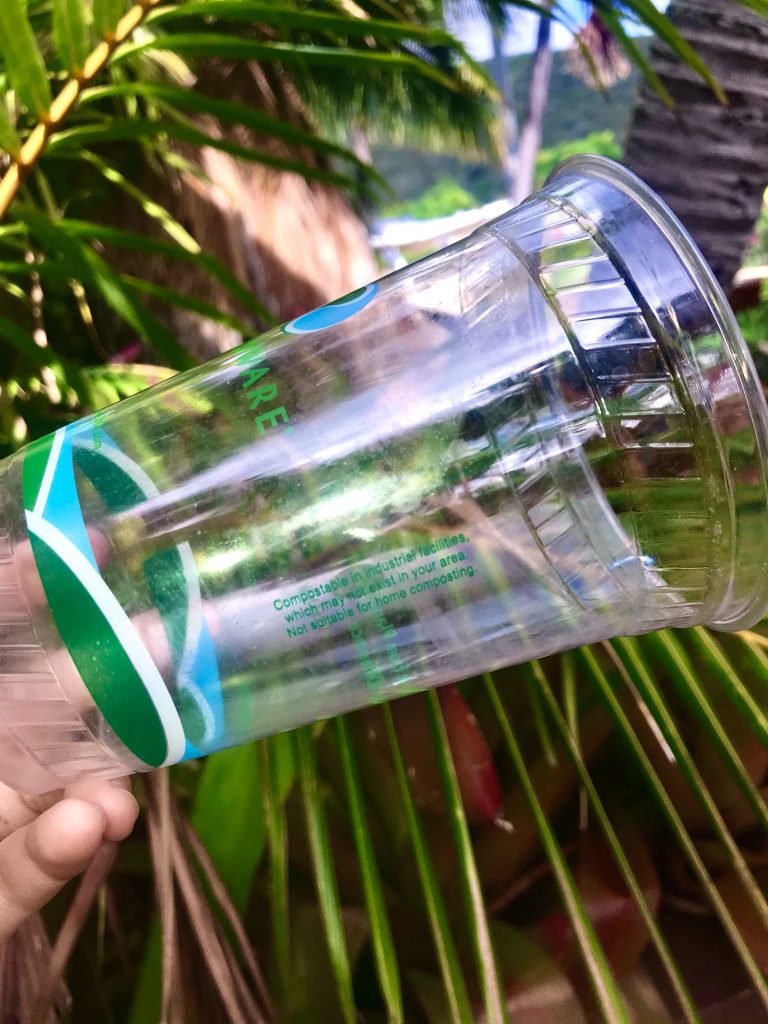
The main concern here is ‘industrial-scale composter’. This just isn’t something your average family has. In fact, even local authorities might not have the luxury of a commercial composter. Even if there is one nearby how do you find it and how do you take your items there?
Unfortunately the Green Seedling logo on your takeaway coffee cup and the Greenware branding on take-out containers does not mean it will biodegrade in your home compost!
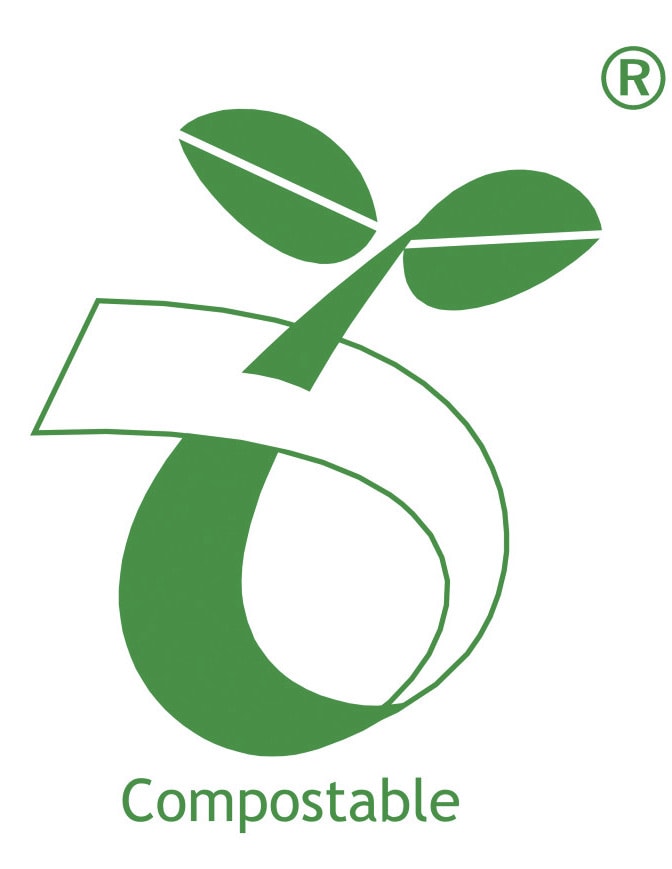
What should we do with bioplastics?
If you cannot dispose of your compostable trash on any old compost; What do you do with it?
Some may place their compostable plastic waste in their green kerbside compost bin with hope and a clear eco-conscience. However, in green waste compost heaps, the conditions are not right for many compostable plastics to breakdown to simple biomass. In many cases the sorters will simply throw out any plastic to avoid contaminating the compost-making process!
What if it’s not compostable? Do we add this plastic-esque material in the mixed recyclables bin?
The triangle recycle logo on most bioplastics will be number 7, meaning “other” for plastic type. Due to the indiscriminate grouping of 7, the plastic mixtures cannot be separated to be recycled. So this isn’t a good option either! As at the recycling centre, they will contaminate the recyclable plastics and waste employ time on extra segregation measures.
Read: Recycling Plastic and the Science Behind it
So do I put it in the general waste?
At landfill, they will pile up, remain intact and not biodegrade. So this isn’t ideal or any better than normal plastic either!! Realistically it’s where most bioplastics will currently end up (unless they escape into the environment).
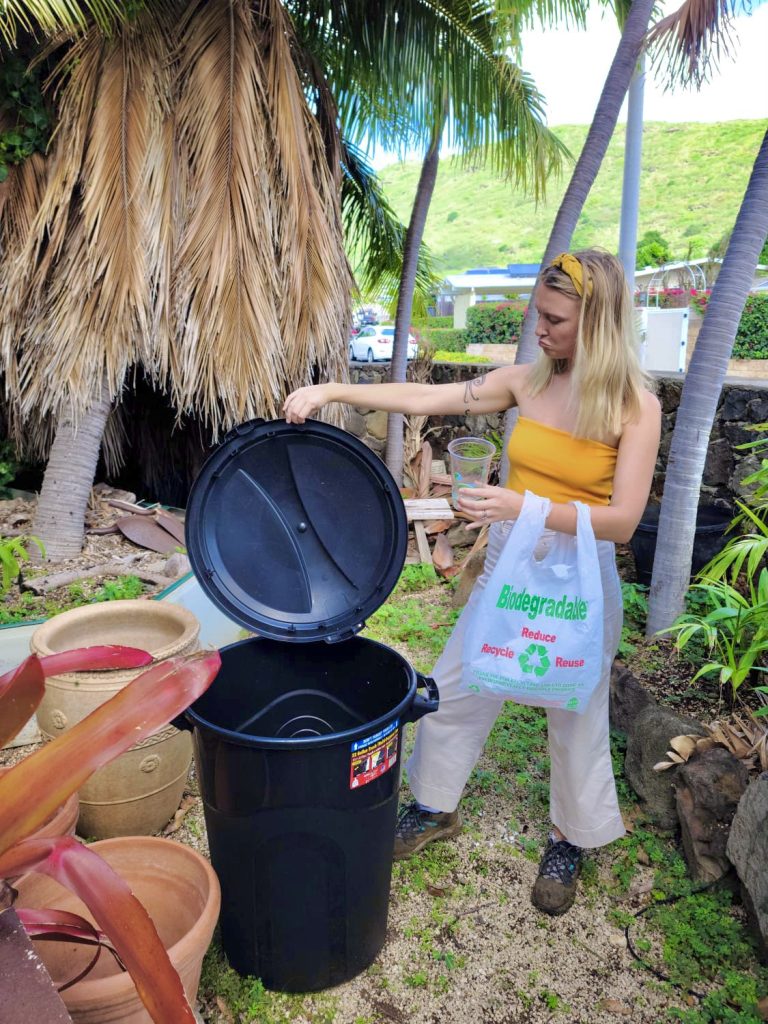
Unless you have local services with access to an industrial composter, then unfortunately every bin is pretty much wrong!
After all of the advancements in bioplastics, currently it may still be more environmentally considerate to recycle a conventional, fossil-derived PET cup than wrongly throw out an “only compostable if you get it to an industrial-scale composter” Vegware cup!
Do bioplastics have a good future?
Bioplastics might not solve our marine plastic pollution problem or be much better than normal plastic currently, but as systems improve and labelling becomes more regulated / clear it could be a better option in the long run. Depending on the type and process used to make it they could also contain fewer harmful chemicals compared to normal plastic.
Could bioplastics also have the potential to tackle another big environmental issue: food waste?
Bioplastics may have the most positive impact in the food and beverage industry. Currently only clean plastic is recyclable, after all it has to be made into a high-quality product that can compete with virgin products on the market. We also know that pizza boxes, albeit made from cardboard, cannot be recycled if the cheesy goodness has overspilled all over the box.
So here is where composting bioplastics shines. From takeaway containers and sandwich boxes, to fruit & veg stickers and coffee pods & teabags having compostable packaging alongside any food and drink residue could all be composted together. The compostable foods packaging industry is capable of reducing the strain on recycling plants. As commercial composters become more readily available, our waste will have another sustainable outlet.
In the near future it will be a triple win:
- Reducing the amount of plastic being sent to landfill,
- Stopping recycling being contaminated with food,
- Helping to cycle nutrients in our food waste back to the soil, not left to rot and release methane, a greenhouse gas more potent than CO2 in landfills.
Bioplastics conclusions and bio-barriers
Bioplastic is a big, wide umbrella for a range of different terms. It may be difficult to wrap one’s head around a multitude of definitions, but it’s incredibly important to have these exact classifications to hold companies accountable for labelling and responsible disposal of their products and packaging.
Education is another huge hurdle for effective integration of compostable food packaging into our waste management systems. Consumers need to be made aware of how to dispose of compostable purchases to guarantee they are made into biomass and not ocean bound trash. We might need another bin and we need better access to commercial composters. Never has waste segregation been more important, as our plastic waste accumulates at landfill, in our oceans and up food chains!
Bioplastics are a brilliantly innovative concept, but in general not much better than traditional plastics currently! It’s best to refuse bioplastics as much as possible for all the above reasons while supporting research and staying hopeful for a scientific breakthrough and for better waste management.
Emily Jupp is a Marine Biologist from the UK, now based in Hawaii. Passionate about living sustainably, keeping plastic free and caring for coral reefs. Follow her story @green.conch and Greenconch.com
Sources
BBC – Why Bioplastics won’t solve the plastic crisis


